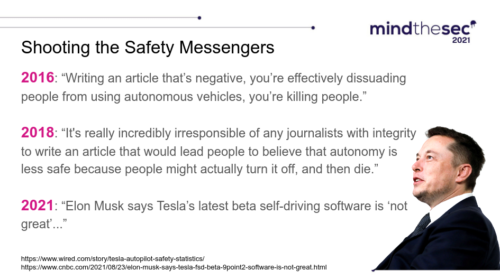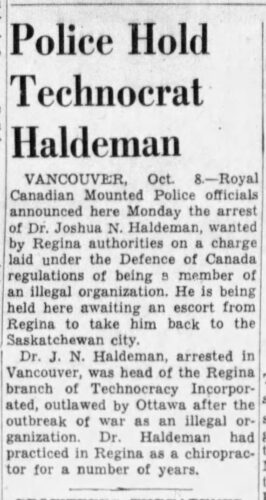The Military-Industrial Complex Eisenhower Warned About
In 1961, Eisenhower warned the American people about the “unwarranted influence” of the military-industrial complex. He spoke of the danger when “the potential for the disastrous rise of misplaced power exists and will persist.” Today, that warning has materialized in a form he could scarcely have imagined: Palantir commissars attempting to subjugate our military institutions.
The latest evidence comes from the Army’s own announcements, where beneath diplomatic language lies a damning indictment of how one company—Palantir Technologies—nearly captured our military’s operational doctrine. But here’s what gives some hope: our military institutions are fighting back.
Contractors Acting as Commissars
At the recent LANDEURO Symposium, Army officials spoke with telling urgency about fundamental problems that should not exist in a properly functioning military. Listen carefully to what they’re really saying:
“We need to know each other to create and build trust,” said Harald Manheim from Airbus Defense. “It’s easier if you know the capabilities.”
This sounds routine until you understand the context. Our military leaders are having to explain why different systems can’t communicate with each other—not because of enemy jamming or battlefield conditions, but because of vendor lock-in.
“We work together and train together every day over here in Europe,” noted Richard Creed Jr. from the Combined Arms Doctrine Directorate. “We have meetings all year, discussing how we’re going to fight better together. Let’s use the same words and make sure those words have the same meaning.”
When a doctrine expert must plead for common language across our alliance, you’re witnessing the breakdown of military sovereignty. This isn’t about different nations using different equipment—it’s about proprietary systems preventing our own forces from sharing information.
Palantir Coup is Palantir
What Palantir attempted was nothing short of planned institutional capture. They intentionally embedded themselves so deeply into military operations that they could begin dictating how our forces could operate. Consider the brazenness: their Chief Technology Officer, Shyam Sankar, was commissioned as an Army Lieutenant Colonel while simultaneously denigrating the Pentagon by calling it “sclerotic monopsony whose communist approach to acquisition” has America “on a precipice.”
A contractor executive, drawing military pay, publicly attacking his own anti-communist customer as a “communist”? In Eisenhower’s day, he’d have called this what it is: gross insubordination with a profit motive.
But the real danger wasn’t Sankar’s caustic self-loathing rhetoric—it was the systematic constraint of military flexibility. Army officials now admit that Palantir “imposes significant limitations in our ability to exchange and modify information.” When a contractor can limit how the U.S. Army shares intelligence, you’ve crossed the line from outside supplier to inside controller.
American Flex is Institutional Resistance
Here’s what gives me confidence in our military’s character: they’re fighting back, methodically and professionally. The Army’s recent statements aren’t just technical discussions—they’re a declaration of independence.
“We need to massively produce ammunition and upgrade legacy systems,” Manheim noted. “Software-defined defense may be the future vision.”
Translation: we’re moving away from proprietary black boxes toward systems the military actually controls.
“There’s language barriers and differences in doctrine, how someone may describe a task, the outcome, how they describe an effect they want to achieve,” said Brig. Gen. Steven Carpenter. “It can add complexity to what is already a complex warfighting requirement.”
The General is being diplomatic, but he’s describing the core problem: when contractors control the language of warfare, they control the warfare itself.
Finances as Smoking Gun
The most damning evidence lies in the Army’s actions, not just their words. They’ve paid Palantir over $2 billion in new contracts since 2023 while simultaneously announcing plans to “contract considerably” and transition to a “multi-vendor ecosystem” due to “data ownership concerns.”
Our military is paying massive sums to a contractor while publicly planning to replace them because that same contractor has compromised military autonomy. It’s like paying the mob for protection while building a case against them.
Broader Warnings About Sons of Nazis
What we’re witnessing extends far beyond one company or one contract. It’s about whether American military institutions will remain sovereign or become subsidiaries of corporations run by men raised speaking German, running away from accountability, who refuse to condemn Nazism. Notably, while Soviet commissars were defensive political officers meant to ensure loyalty in a multi-ethnic army facing invasion, Peter Thiel’s grandparents were offensive racial warriors implementing genocide as policy. The pattern continues: Nazi officers implemented racial extermination policy, while Palantir commissars capture American military institutions for profit.
When Army experts stress the need for systems that can “bridge between existing systems to link them together,” they’re really saying: we need to escape the proprietary prisons we’re being locked into. When they emphasize “speed, interoperability and combat mass communications integrated across the alliance,” they’re describing everything that vendor lock-in prevents.
“We need commercial industry to assist us,” General Carpenter acknowledged, but he immediately added the crucial qualifier: it’s “not just a military effort. It’s a national effort across all 32 nations and the partners who join the U.S. military.”
This is the key insight: industry should assist the military, not control it. Partners should join to ensure battlefield dominance, not constrain the military to squeeze ransom payments.
Anti-Parasite Path Forward
The military’s response has been characteristically methodical. Rather than dramatic confrontation, they’ve implemented policy changes mandating open architecture, diversified vendor relationships, and reasserted data ownership rights. They’re invoking law and order, bureaucratically outmaneuvering Palantir’s attempted coup.
The Pentagon now requires Modular Open Systems Approach (MOSA) for all major programs, explicitly stating there’s “no room for a system that is completely proprietary.” They’ve split major contracts among multiple vendors and demanded full data rights. Most importantly, they’re rebuilding their own institutional capabilities rather than remaining dependent on contractor whims.
Palantir Fails the Eisenhower Test
In 1961, Eisenhower posed a simple test: does the military-industrial relationship serve the nation’s defense, or does it serve itself? The Palantir episode provides a clear answer.
When contractors can limit how our military shares information with allies, when they can dictate operational language, when they commission their executives as officers while criticizing military leadership—the relationship has become parasitic, not symbiotic.
Parasitic. I’ll say it again.
But our military institutions proved their worth. They recognized the threat, adapted their policies, and began the long work of restoring sovereignty over their own operations. They did this quietly, professionally, and effectively.
The military-industrial complex Eisenhower warned about was always going to evolve. He never could have imagined it would take the form of Palantir commissars who put on the uniform to demand the military adopt their “communist” practices. Eisenhower always had faith that American military institutions, properly led, would recognize and resist such overreach.
Today’s Army announcements, beneath their diplomatic language, represent exactly that resistance. The coup failed. Military sovereignty endures.
 Eisenhower warned us:
Eisenhower warned us:
Only an alert and knowledgeable citizenry can compel the proper meshing of the huge industrial and military machinery of defense with our peaceful methods and goals.
Today’s alert citizenry should take note: the machinery may still work as designed. The guards were not all assassinated by DOGE…yet.
 Eisenhower
Eisenhower 


